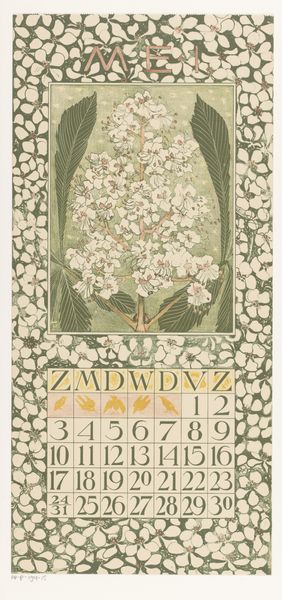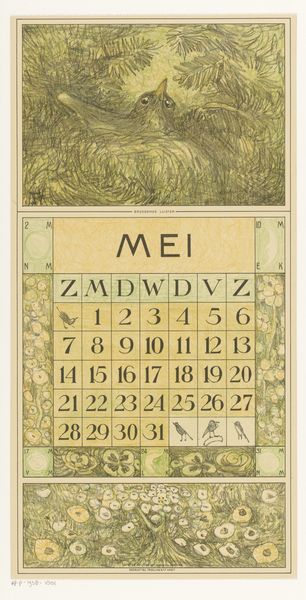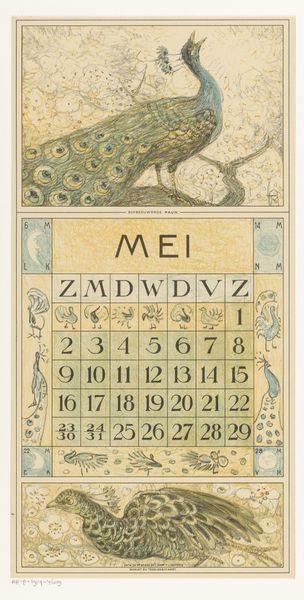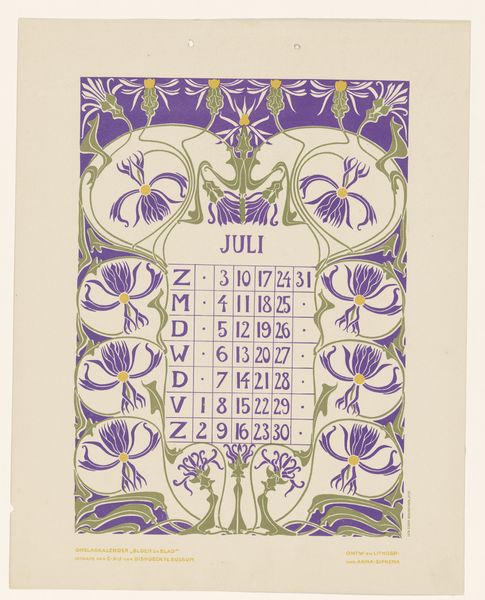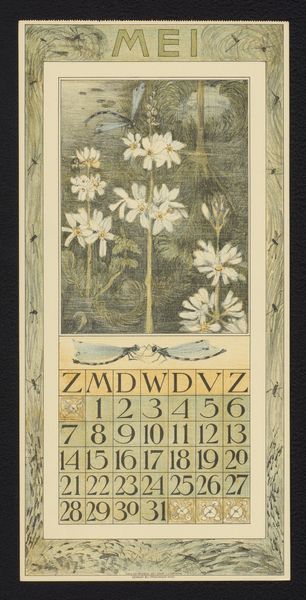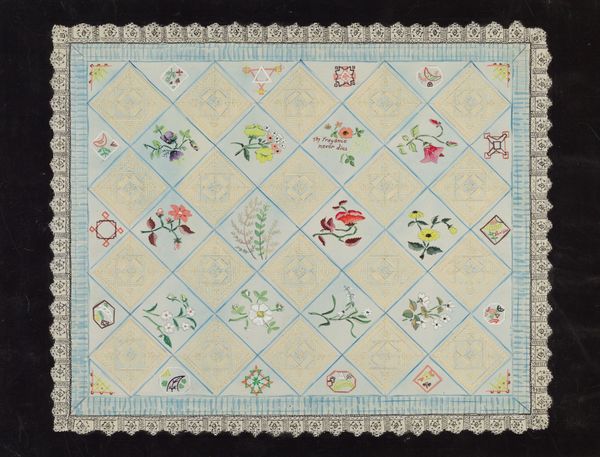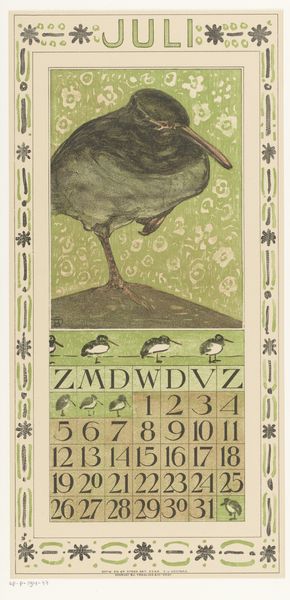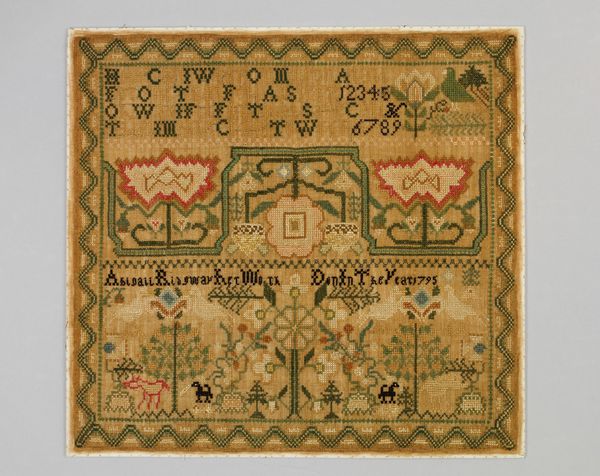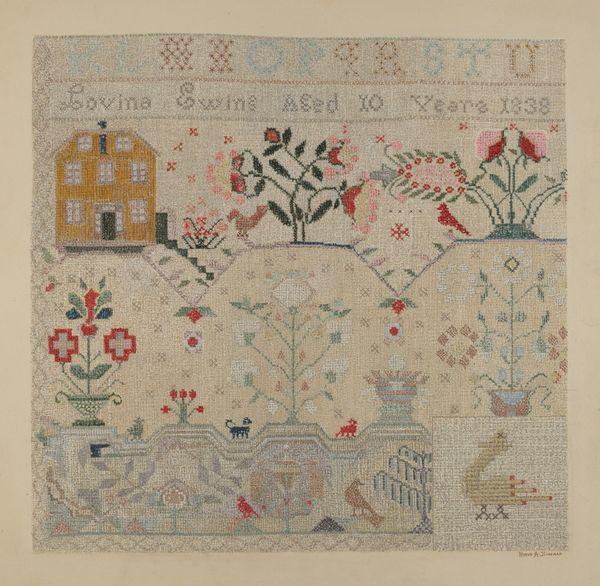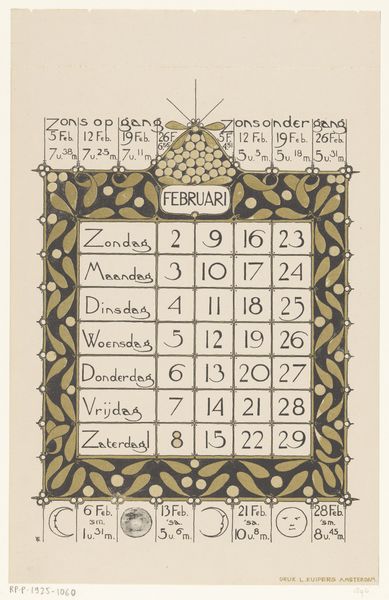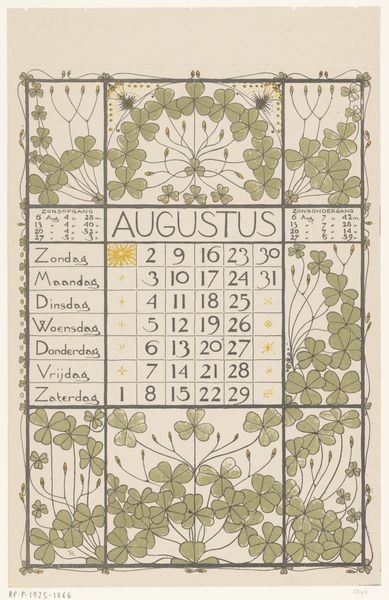
Kalenderblad voor zomer 1904 van de Verzekering-Maatschappij Holda in Amsterdam before 1903
0:00
0:00
Dimensions: height 385 mm, width 465 mm
Copyright: Rijks Museum: Open Domain
Editor: This is “Kalenderblad voor zomer 1904 van de Verzekering-Maatschappij Holda in Amsterdam,” or "Calendar for the Summer of 1904 for the Holda Insurance Company in Amsterdam," made before 1903 by Ferdinand Hart Nibbrig, a print and watercolor piece. It’s…quaint. The pastel colors give it an old-fashioned, nostalgic feel, but there's a real sense of labour, community and connection to nature depicted here, beyond a mere commercial product. How do you interpret this work, particularly in relation to its purpose as a calendar for an insurance company? Curator: Well, consider the historical moment. Late 19th and early 20th century Europe experienced rapid industrialization, urbanization, and social change. Against that backdrop, the calendar presents an idealized vision of rural life: laboring people connected with nature and seemingly untouched by modern industry. This imagery wasn't just aesthetic; it was a powerful narrative being sold by Holda Insurance. Editor: A narrative of what, exactly? Security and tradition? Curator: Precisely. Insurance, at its core, offers security. By associating itself with an idyllic, seemingly timeless rural scene, Holda taps into a longing for stability and community. Note the division of labor – could that be interpreted by gender lines? Does that affect the work? Editor: Interesting, the woman tending to a child while the man works in the field. So it's not just a calendar; it's carefully constructed propaganda that promotes specific societal norms. Curator: Exactly! And think about who this imagery targeted. Likely, it was middle-class urban dwellers who felt alienated by industrial life. The calendar offers a vicarious escape, a comforting fiction promising security amidst change. It masks the company's capitalist motives with nostalgic and perhaps even deceptive visual language. Do you see the tension now between the pastoral imagery and its actual function in the marketplace? Editor: I do! It’s like the image of simpler times being used to sell protection from modern anxieties. Thanks, that’s helped me see this piece in a completely different light. Curator: And I see the potent effectiveness that these types of cultural artefacts, at this turning point in our history, could bring forth.
Comments
No comments
Be the first to comment and join the conversation on the ultimate creative platform.
